I remember when I first discovered that filling in your brows was a thing, and embarrassingly, it was fairly recent. I’ve always taken a pretty lackadaisical approach to makeup, so it’s not surprising I was a bit of a late bloomer in the brow department. Growing up, I was never really into makeup and tended to go the more natural route. But of course, the more I was exposed to it via friends, the internet, what have you, the more I dabbled. And when I did actually start wearing makeup (starting in middle school), let’s just say everything was very… experimental.
Eventually, I discovered I could fill in my brows. To paint the picture for you, this was also during a time when I was recovering from a base-bump gone wrong, so my hair was a fun shade of yellowish-orange. (I kid.) The art of filling in your brows is exactly that: an art. It takes practice and patience and, most importantly, restraint. None of which I had. I didn’t know how to do natural, hairlike strokes, so I just filled ’em right up. My sister once told me it reminded her of the time I played Julius Caesar in a school play, for which the makeup artist (aka one of my classmates) drew on big, dark brows. My sister wasn’t wrong, and they did, in fact, look costumey.
In the years since discovering brow makeup, I have honed my skills a bit and—if I do say so myself—gotten slightly less bad at it. (It also helps that I literally read about beauty trends every day for work as a copy editor for Who What Wear.) That said, ever since I became a mom, I’ve noticed my brows getting sparser and sparser, making it even harder to fill them in naturally. Despite the fact that I haven’t plucked them nor gotten them waxed/threaded/trimmed by a professional in over five years, there are empty patches that weren’t there before, and I swear I wake up with different brows every morning.
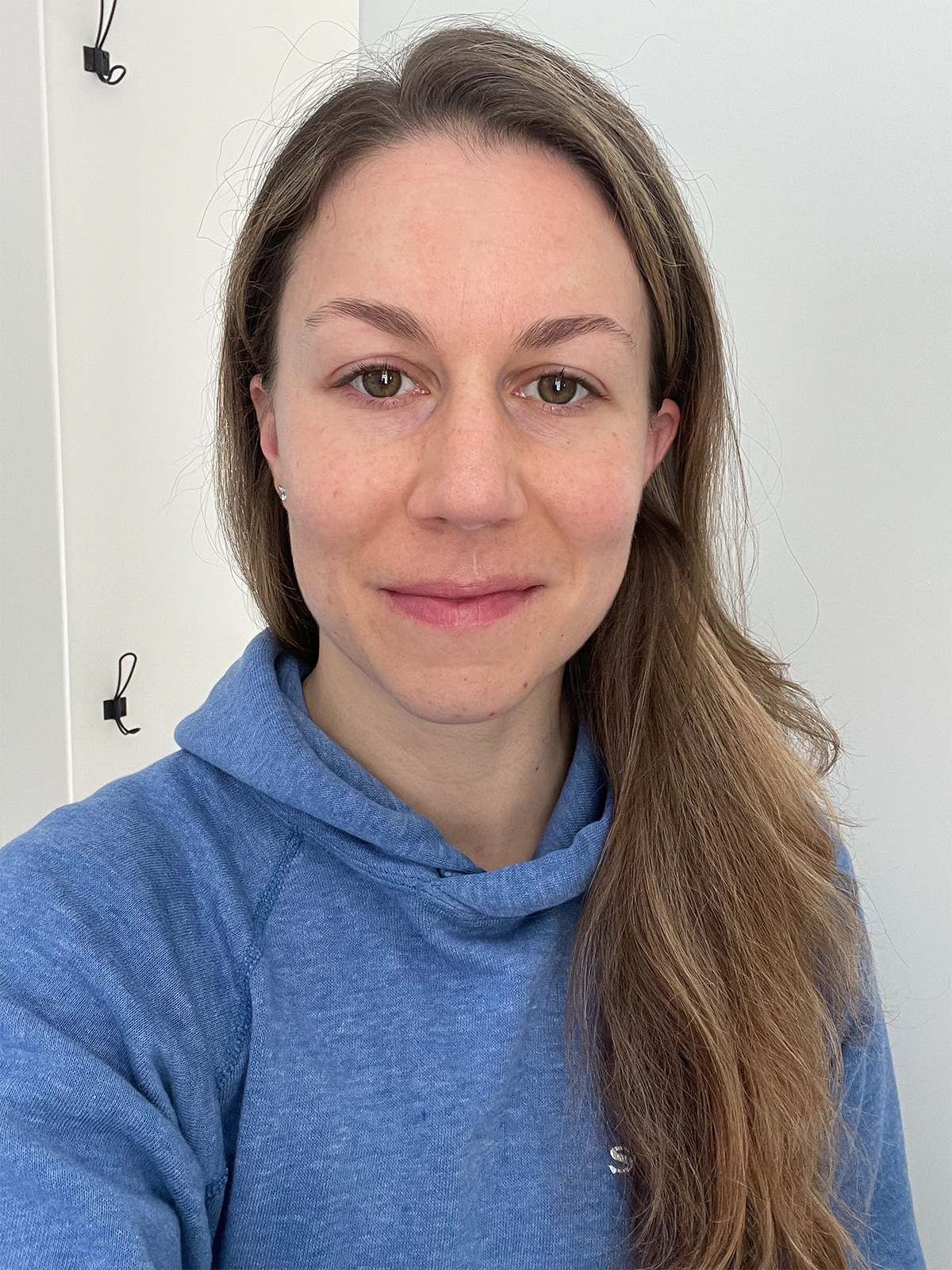
One of the good things that came out of my discovering brow makeup was realizing how much your brows really frame your face. And as mine were seemingly blowing away with the breeze, I wanted to do something about it. I don’t have time to fill in my brows every morning, nor do I want to, and as we’ve established, I don’t have the skill. I could get by, and I’ve found some products that have worked really well for me, but I can never seem to find the right shade.
So in my quest to get the natural-looking, full-but-subtle, symmetrical brows of my dreams that I don’t have to touch ever, I decided to turn to the pros—the first being our senior beauty editor, Erin Jahns. I told her I was looking to do something to my brows, and she immediately recommended I get in touch with Alix Capparelli, the founder of Hairy Little Things. Capparelli is a makeup artist with over 22 years of experience in the beauty industry, and as Erin put it, she’s a “bona fide fairy godmother” when it comes to brows.
When Erin connected us, I sent Alix a picture of my brows with no makeup on, and she said I was a great candidate for microblading. I had an inkling that that would be the solution (years of reading Who What Wear Beauty led me there), but I was nervous about the process—not because of the pain but because I really didn’t want statement brows, which I had always associated with microblading. Julius Caesar as interpreted by a middle school theater makeup artist was not the goal. That’s not to say that I think statement brows are bad—I love them on other people—they’re just not right for me or my face. But after looking at Alix’s Instagram page, I was all in. Not only does Alix work with some impressive celebrity clientele, but she also has worked with a lot of, well, people like me who are looking for subtle, natural, non-statement brows. I knew I’d be in great hands, and I booked an appointment.
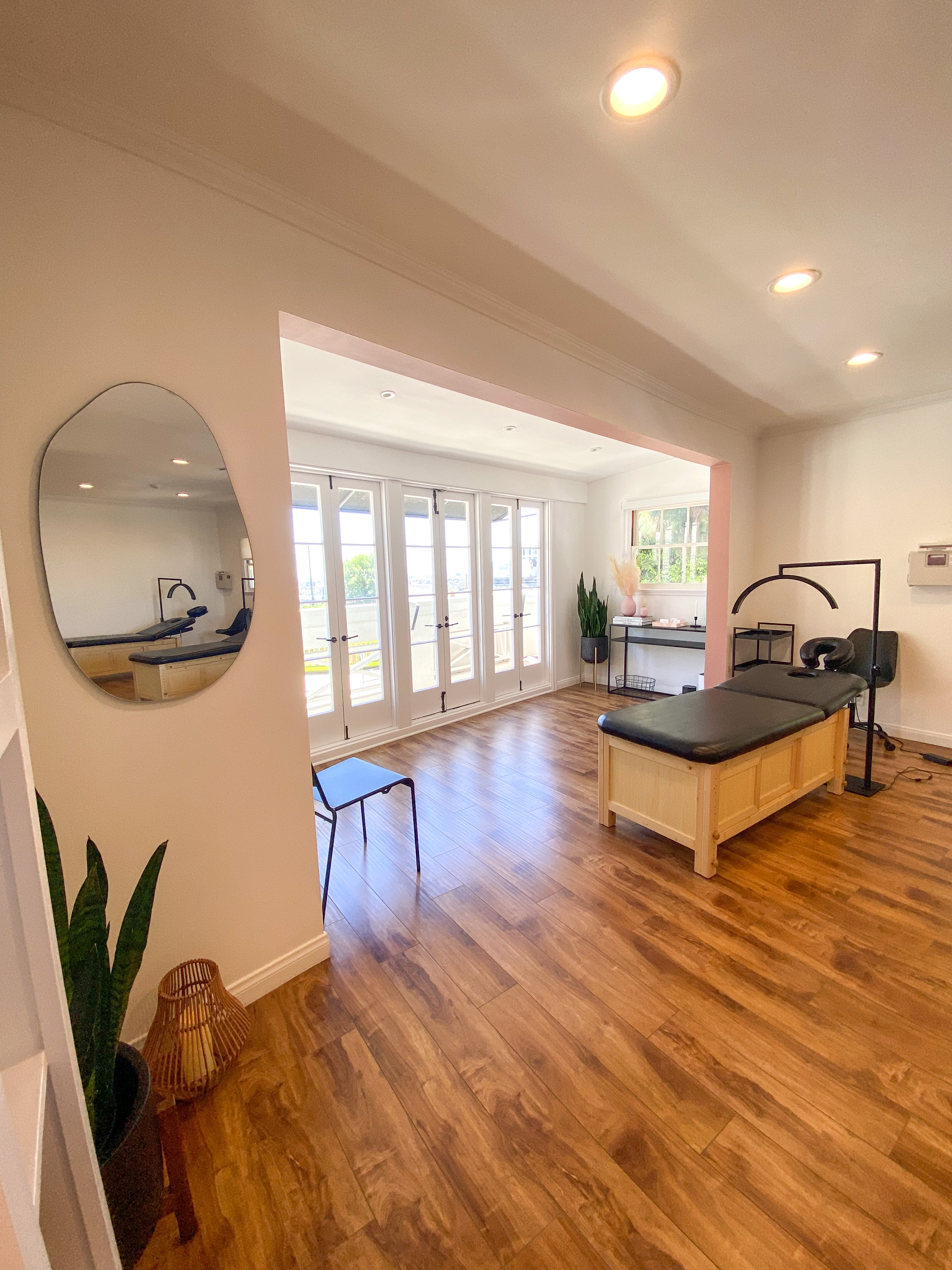
From there, the team at Hairy Little Things sent me all the info I needed prior to the appointment, which included prep instructions (we’ll get to that in a bit), an infographic on what to expect in the weeks following (this was so helpful—expectation management is key), and aftercare steps to follow religiously. If you’re over trying to fill in your brows every day, lack the skills to do so, and/or are considering getting microblading done for whatever reason, keep reading to see what the process was like for me and whether I think it’s worth it.
In short, microblading is a process in which a trained specialist uses a blade and custom pigment to create tiny strokes that mimic natural brow hairs. It’s great for anyone with sparse, asymmetric, over-tweezed, over-waxed, or thinning brows. At Hairy Little Things, the microblading treatment includes brow reshaping or symmetry work as needed, plus a touch-up session after six to eight weeks. The final result is semipermanent, superficial brows. You can get the full rundown on microblading on the Hairy Little Things website.
As you might imagine, I had a ton of questions before the treatment. I knew there would be some aftercare involved and possibly some redness, so it was important schedule-wise to know what to expect before even booking the appointment. While instructions will likely differ slightly depending on where you go or who you see, here are some things to consider based on the prep instructions I received.
Avoid caffeine prior to your appointment. If you’re like me and require multiple cups of coffee before lunch, you might want to consider a morning time slot. Also, avoid drinking alcohol 24 hours before the procedure; tanning or sunbathing three days before; chemical peels or harsh exfoliating treatments for at least one week before; Retin-A/retinoids/retinol, filler, and Botox for two weeks before; and fish oil, vitamin E, aspirin, and other blood thinners 24 hours before.
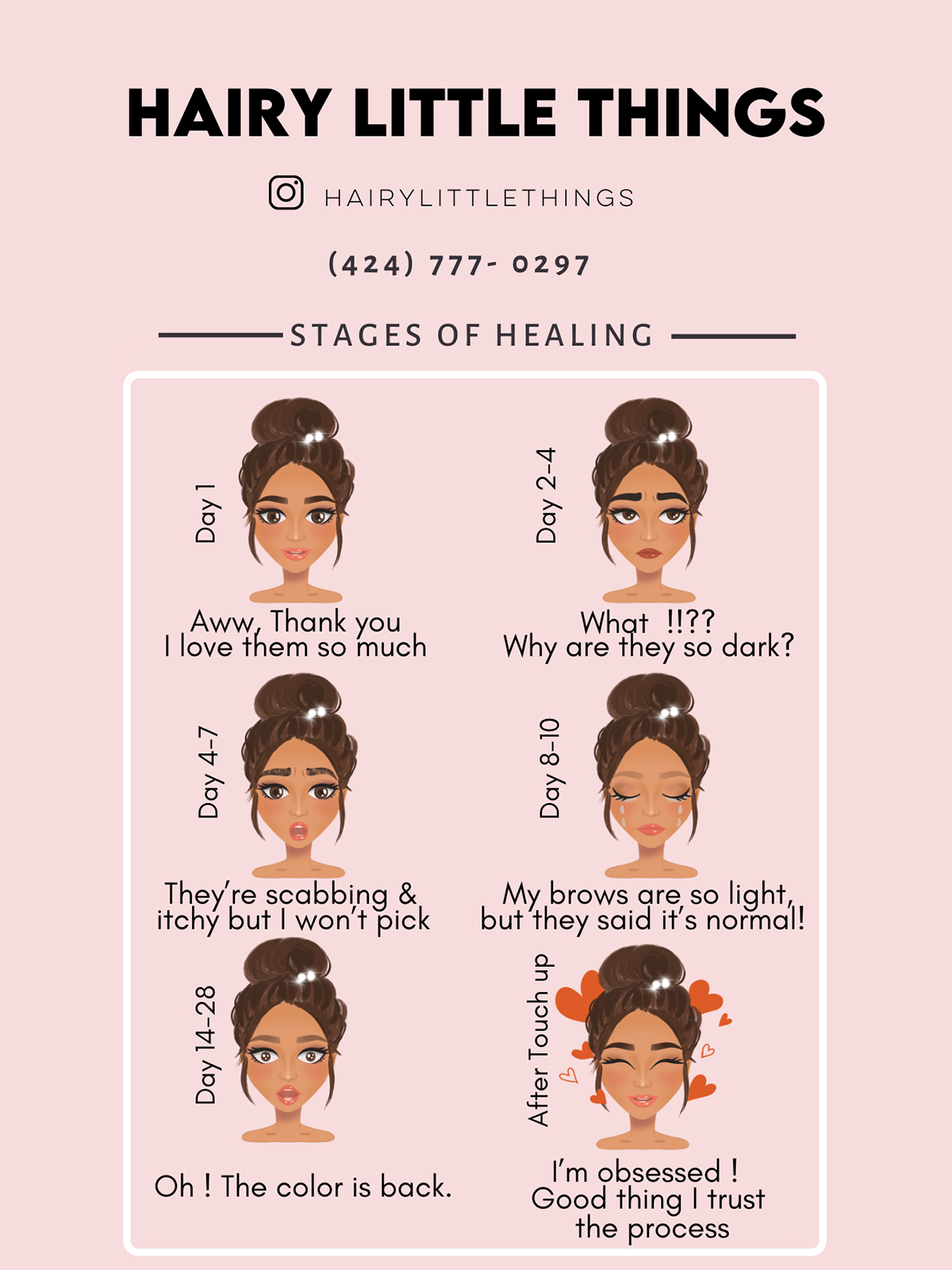
In addition to avoiding the above beforehand, I’d recommend clearing your calendar for the rest of the day. By that I mean just don’t plan on attending anything that you don’t want red brows for. My redness cleared within a few hours, but your brows will look pretty raw immediately after, so keep that in mind. Lastly, if you’re prone to sensitivity or have any pre-existing skin conditions, it’s always a good idea to consult a doctor or dermatologist prior to booking a treatment.
I had a wedding to attend four days after the procedure, and based on the timeline HLT sent me (see above), it seemed like my brows might be scabbing or flaking at that point. So I made sure to check with Alix ahead of time, and she assured me that they actually would not look too scary, perhaps just a bit darker than the final result.
When I arrived at the salon, Alix put a numbing cream on my brows while she prepped for the treatment. Then, she brushed up my brows and handed me a mirror that I thought was maybe for nostalgic reasons. You know, to say goodbye to the patchy, uneven second cousins above my eyes before she bibbidi-bobbidi-booed them into twins.
But I soon found out this move was more strategic than it was sentimental. She asked me if I had a favorite brow, and if so, why. “Well, neither,” I thought immediately. But what this did was get me to talk about what I like about my brows and what I dislike, and it put us on the exact same page in terms of what I was looking for. She also asked if I wanted a whole new look or to stay within my brows’ current footprint. Definitely the latter, I told her. Our convo was a mix of me explaining what I wanted but also, and equally as important, me trusting her professional opinion on what works best with my face, features, hair color, etc.
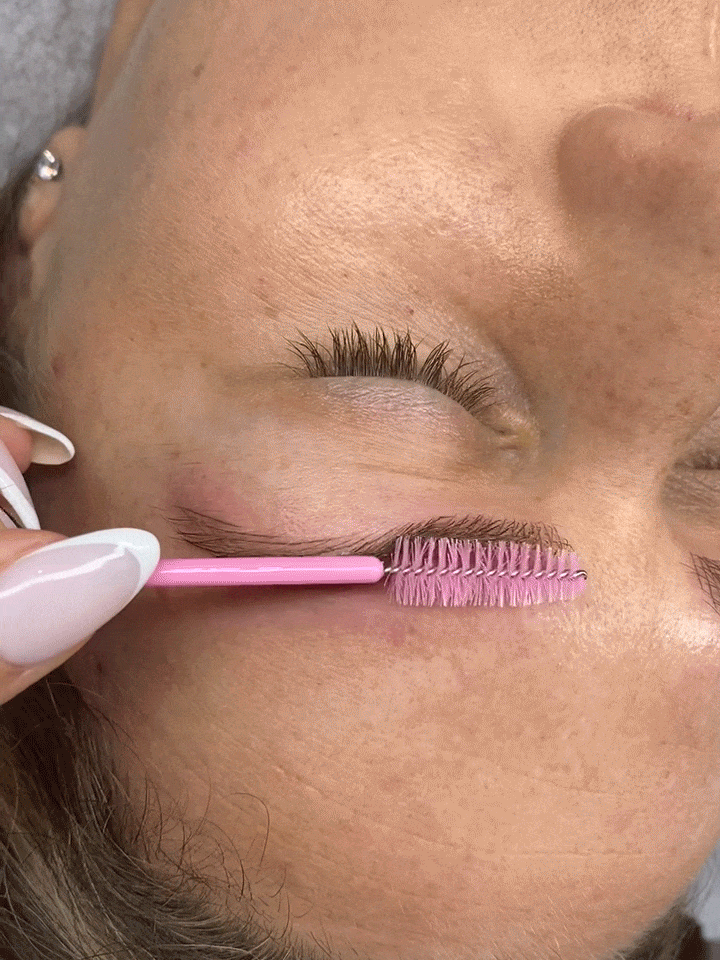
Alix then took a brown liquid and began drawing an outline, focusing on my natural brow shape and filling it in. She explained that this step was to determine the shape only and not indicative of the final color my brows would be. I was surprised when she told me I had a natural arch, and sure enough, when I looked back in the mirror, there it was. (This is why I leave the semipermanent makeup application to the pros—I had no idea.) It was a little too much of an arch, though, so she filled them in more underneath ever so slightly. And boom, they were perfect, and it was time to commit.
After applying some lidocaine, Alix started in with the blade, never taking it outside of the outline she drew on with the brown liquid. The only way I can describe it is that it felt like a lot of tiny scratches—not necessarily painful but certainly uncomfortable. She went over each brow three times, applying more lidocaine in between each round. I was able to carry on our conversation during it, and my eyes surprisingly didn’t water very much. I specifically didn’t put on mascara that morning because I expected them to. The actual microblading portion of the appointment took about 25 minutes (not a fact, just my estimation). Alix told me afterward that I did bleed a bit, but that didn’t surprise me, and it stopped by the time I got to my car.
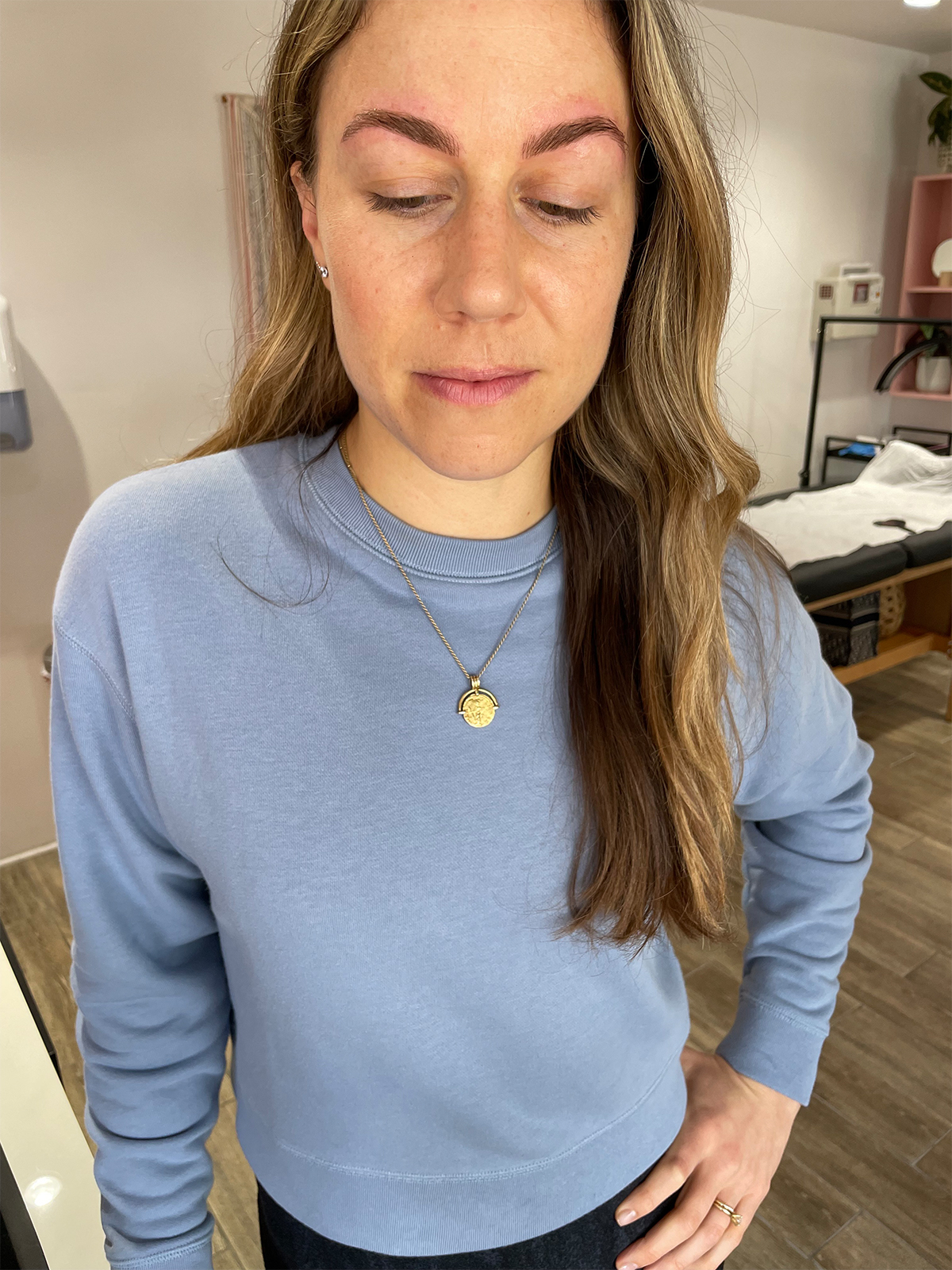
When she handed me the mirror again, I couldn’t believe it. My brows looked exactly like the brows that I visualized every morning before I went in with the pencil but that never quite materialized—perfectly shaped, natural (minus the redness surrounding them), subtle. “You are a magician,” I think I said. And I wanted to hug her.
She put some ointment on them and sent me on my way with strict instructions to follow the aftercare guidelines to a T. That included avoiding excessive sweat, pools, sun exposure, jacuzzis, and saunas. Remember that wedding I mentioned earlier, the one that I’d be attending just four days later? Did I also mention it was in the desert, where it was supposed to be over 100ºF? A challenge.
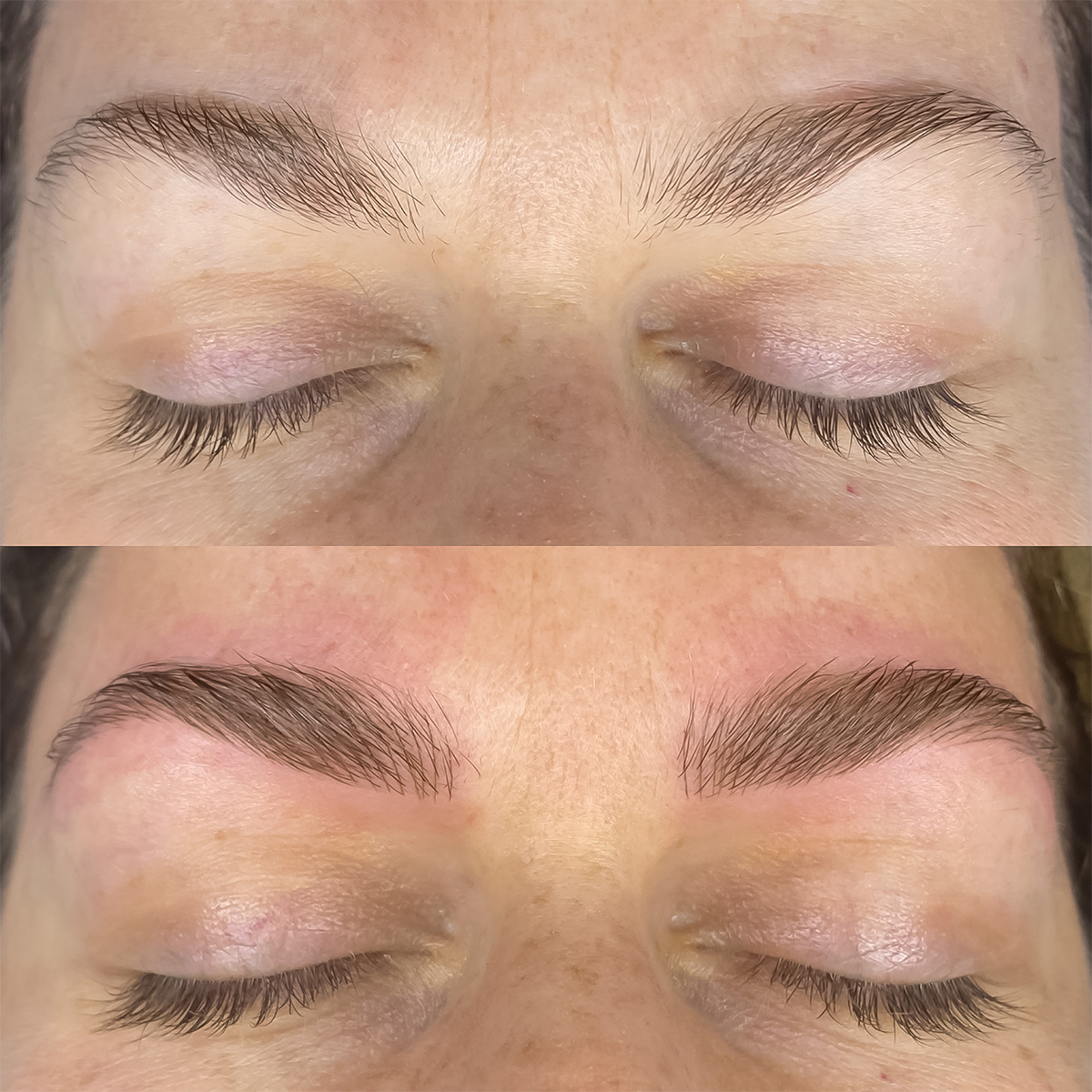
Immediately after, my eyebrows were, as I mentioned, very red. Alix told me I should expect them to feel like a little sunburn. That was accurate, but it went away after about 30 minutes, and the redness fully subsided within a few hours. For some reason, I expected the maintenance to be tedious, requiring me to apply an ointment all day and deal with constant discomfort, but it’s more about leaving them alone and avoiding certain activities for the first 10 days.
During that time, in addition to avoiding sun, exercise (no sweating allowed), and water/moisture, Hairy Little Things says to avoid undergoing any laser or chemical treatments, applying creams containing Retin-A or glycolic acid, and picking/scratching the brow area. They also advise only putting Aquaphor on the brows when you need to, such as when you shower or toward the end of the healing period if they itch or scab. I made sure to keep my face away from the showerhead, only used the Aquaphor when I had to wash my hair, and was careful to not touch my brows or get them wet when I washed my face.
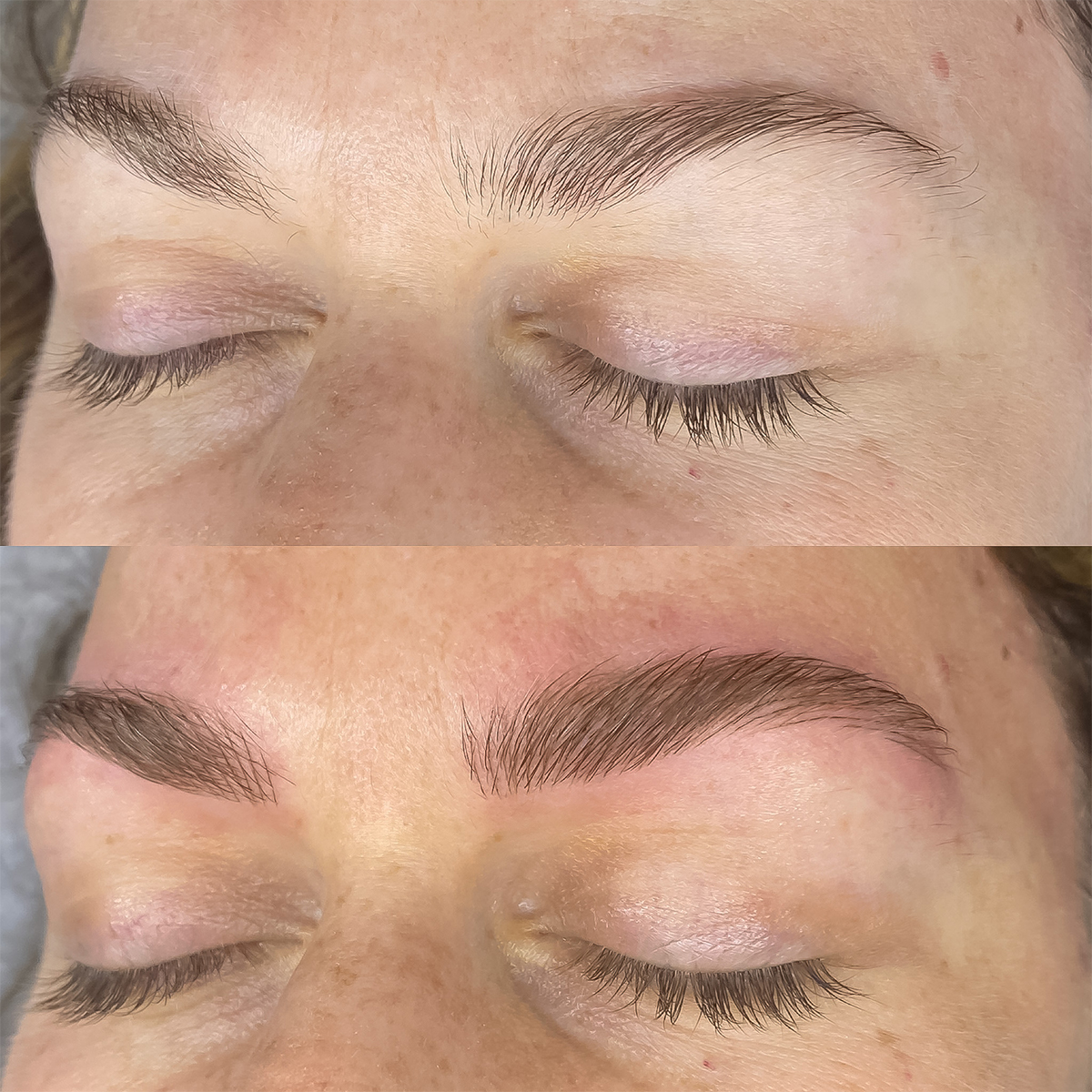
The desert-wedding-weekend challenge turned out to be not so challenging after all. Alix gave me permission to be in the pool as long as I didn’t dunk my head and wore a hat at all times in the sun. She also advised wearing sunglasses while in the pool since the sun reflects off the top of the water and could ruin the pigment. (A hot tip, if you will.) I also made sure to retreat to the AC at the first sign of perspiration, which was probably advisable anyway, fresh brows or not.
By day seven, I had barely noticed any itching or discomfort since the actual treatment. If I hadn’t been so obsessed with looking at them in the mirror every chance I got, I probably would have forgotten that I got my brows tattooed. This is just my experience, though, and peeling, itchiness, and moderate to thick scabbing are to be expected as part of the process. Also, because of natural skin regeneration, the brows might end up appearing lighter than they originally were during those first 10 days. That’s why Hairy Little Things recommends a touch-up after six to eight weeks. I found the infographic they sent me to be so incredibly helpful in terms of expectation management and understanding the stages of healing.
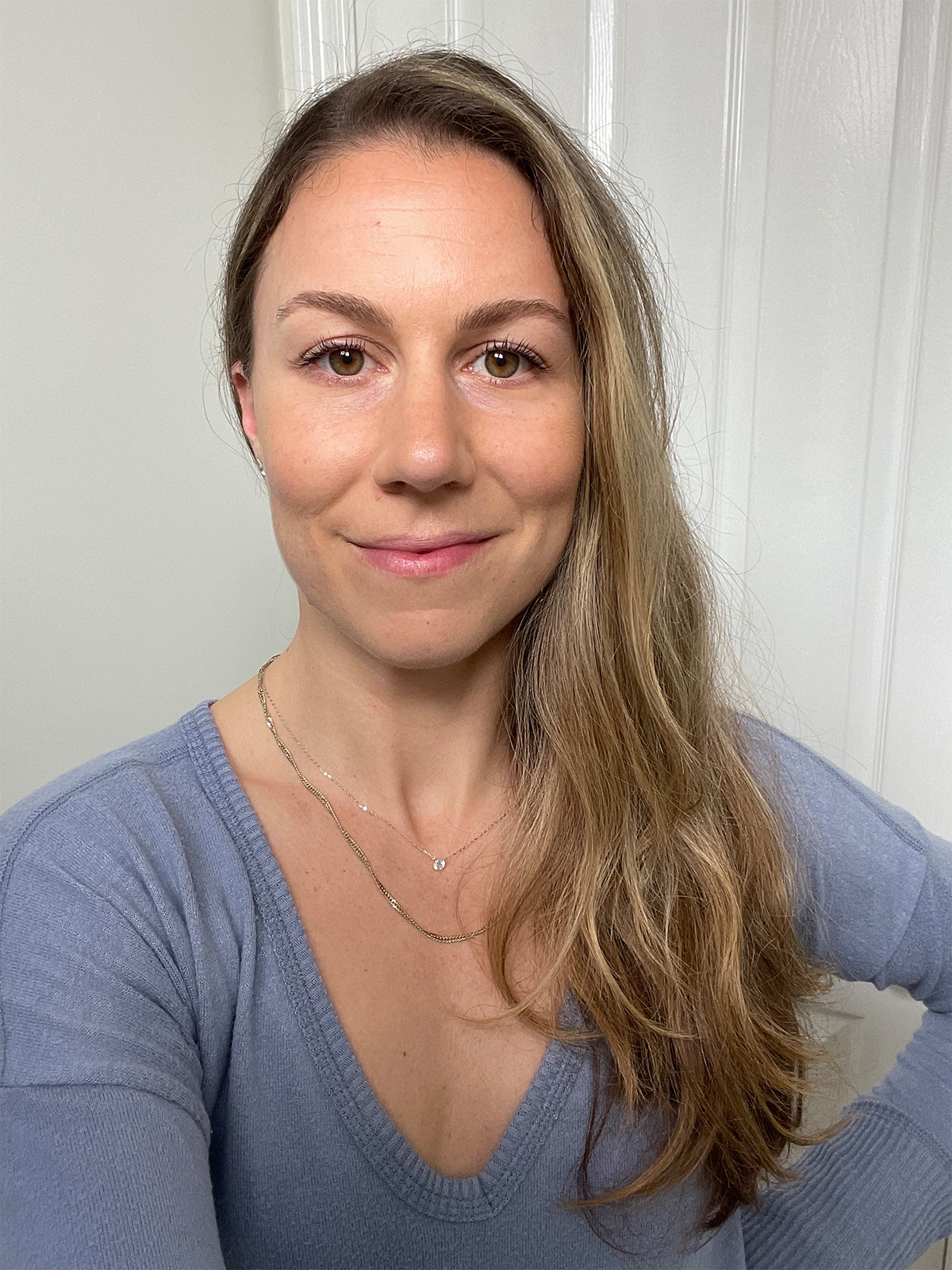
It takes about 30 days for the brows to fully settle into their final look. So far, I am thrilled with the result. I can only vouch for Alix’s wizardry (wizard, magician, fairy godmother—she’s all the things), but Erin has also visited the Hairy Little Things salon in West Hollywood for various treatments and had nothing but great things to say about her experience there.
In the interest of full transparency, I was able to get this done as a perk of my job. I had access to one of the best brow specialists around and felt very comfortable because of that. Microblading treatments range in cost, depending on where you go, and even within Hairy Little Things, the price is based on which specialist you go to. It can cost anywhere from $400 to around $800. Yikes. (This does include the touch-up appointment. But still, it’s nothing to sneeze at.)
If you’re considering microblading, it will be an investment. So the question is, Would I pay for it? The short answer is yes. Before microblading, I honestly felt a bit naked if I didn’t fill in my brows. And as a new mom, I value anything that takes even just one more task off my daily to-do list, especially in the morning. Plus, I feel so much more put-together, even without any makeup on, and that goes a long way in my book. It’s also worth noting that I really don’t do any other beauty treatments (yet) besides haircuts and highlights (I even do my own nails, TYVM), but this one is something that I consider worth it. Although, the $400 range is probably the peak of my comfort zone.
If you are really unhappy with your brows for whatever reason and decide it’s something that’s important to you, I highly recommend microblading if it’s feasible budget-wise. I suggest finding a trusted, trained professional and being very clear about what you want. Check their website and social media for examples of their work. Take pictures! Of yourself and of other people whose brows you like for reference, but of course, work with the pro to find something that works best for you. Perhaps err on the lighter/smaller side if you’re apprehensive about statement brows. And if you want a whole new brow look, the procedure is certainly great for that too.
If you’d rather stick to at-home brow products, here are some of my favorites that even a makeup novice can handle.
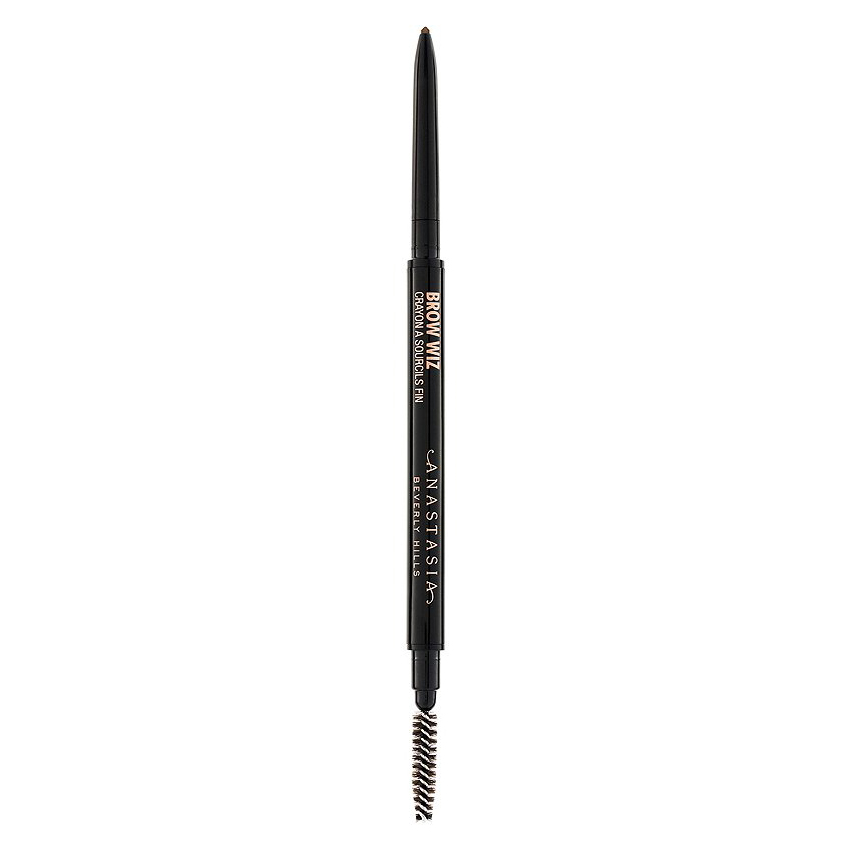
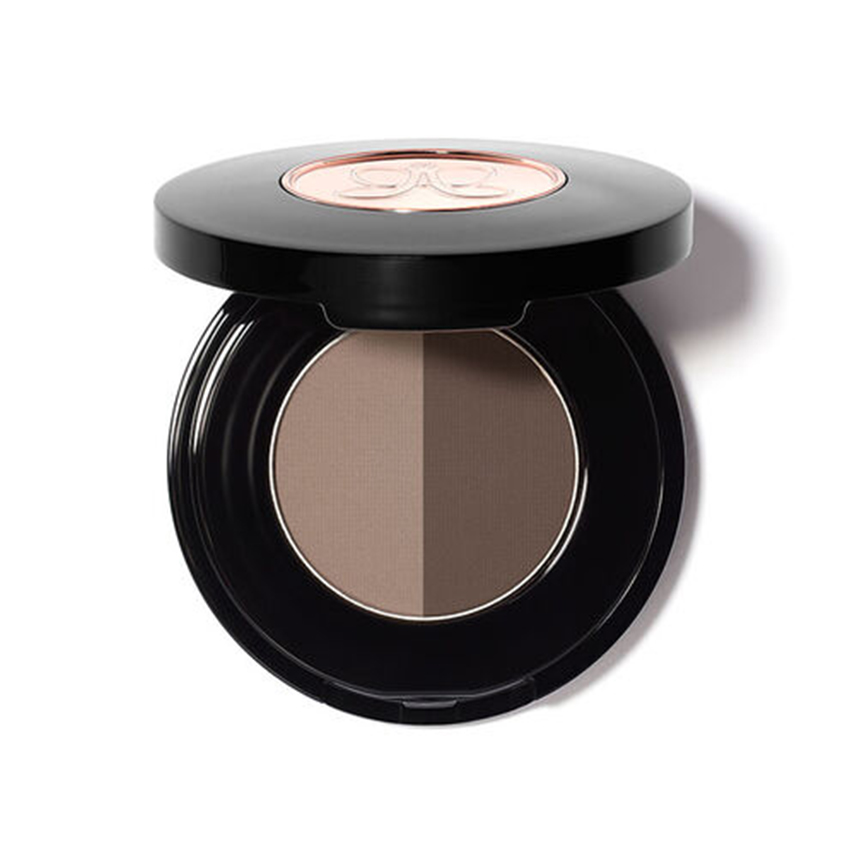
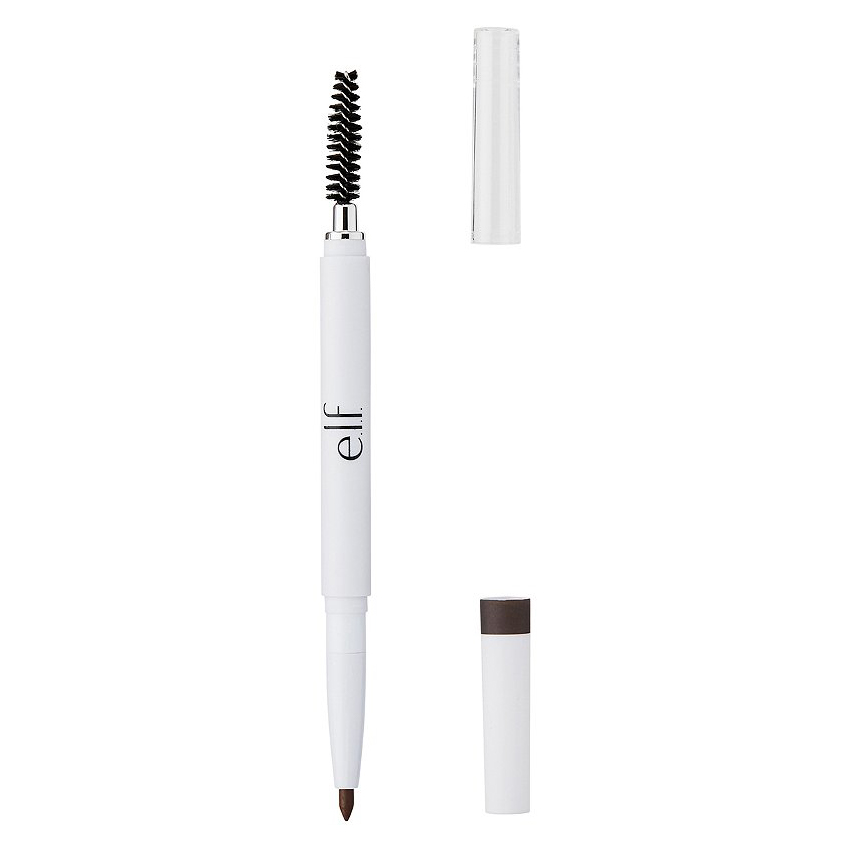
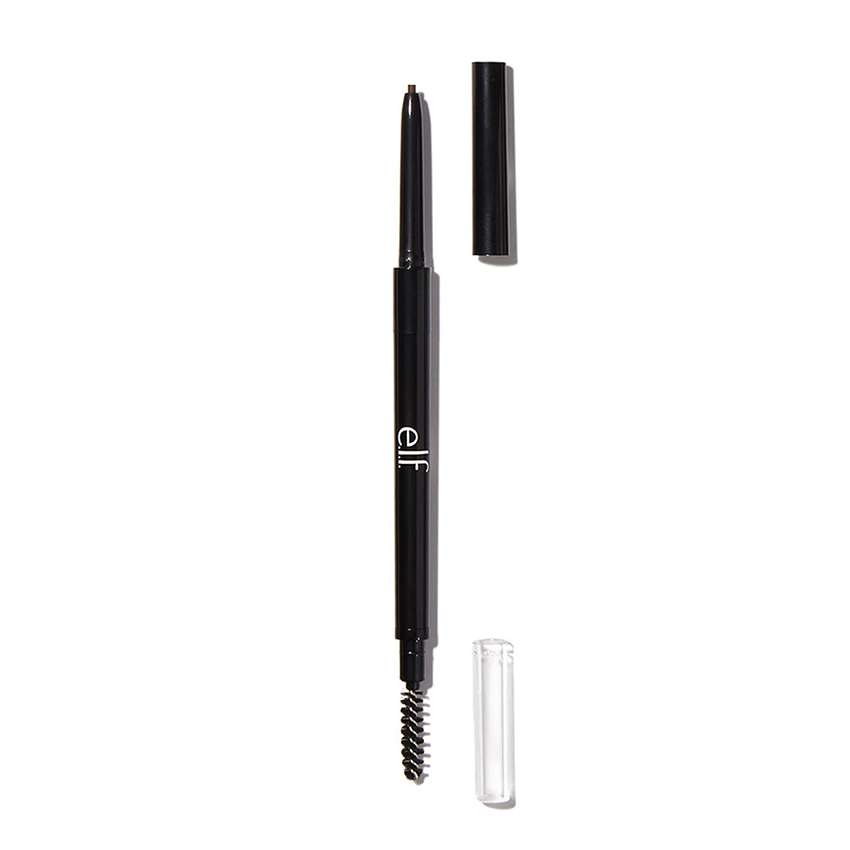
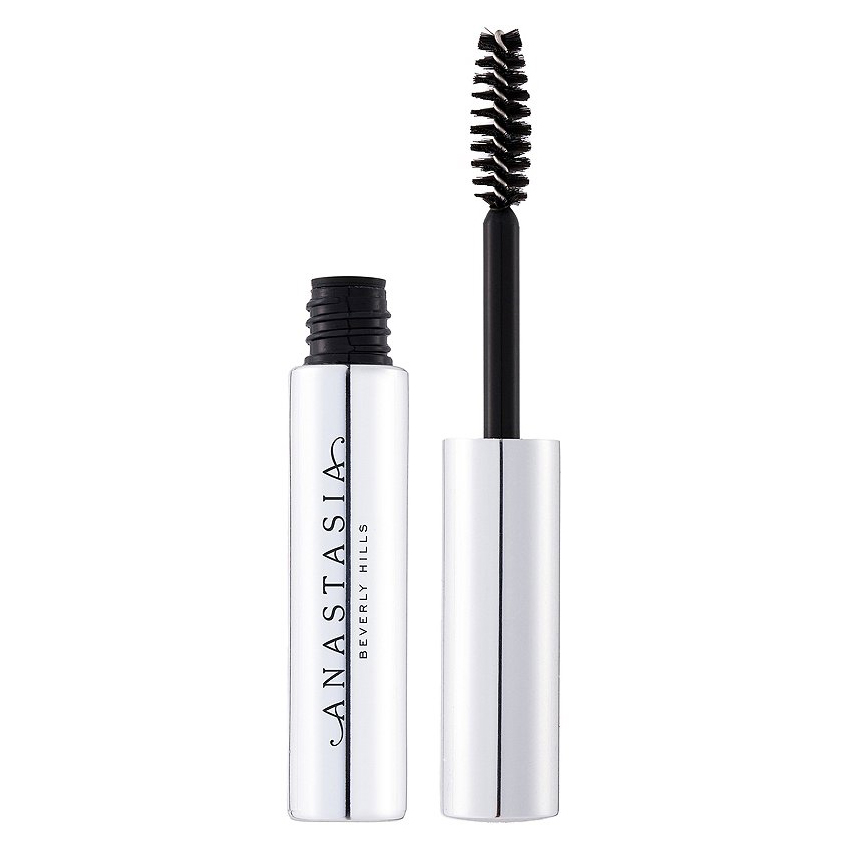
Up next, Found: The Exact Product Equation to Achieve Adele’s Signature Liner and Lashes
